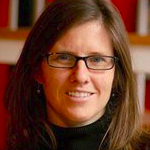Many of us, at some point in our lives, have had to deal with a variety of different healthcare professionals for an episode of care. Perhaps your primary physician has referred you to a specialist, or the ER doctor required you to see your primary physician for follow-up, or you've been admitted to the hospital from the ER.
When going from one healthcare provider to another, a patient’s health information—including the symptoms, test results, diagnosis, treatment plans, medications, allergies—can often be lacking, missing, contradictory, or just confusing.
Healthcare leaders recognize that we have been poorly equipped to share patient information and are eager for changes. In fact, a recent survey of top healthcare leaders around the world indicates they’re most concerned with implementing technology that allows doctors to communicate with each other, believing that collaboration and information-sharing among health professionals have the greatest near-term potential for facilitating large-scale health sector innovation.
Recently, as part of the World Health Congress keynote presentation and a panel discussion titled “Ministerial Forum on Global Health Innovation: A Perspective on National Health Opportunities,” Cisco released findings from a global health leader survey on national health sector innovation. According to the survey, 65% of government healthcare officials in 16 countries believe that technology-enabled collaboration among medical professionals is the innovation mostly likely to lead to the transformation of healthcare systems.
When asked what options would enable “significant, nationwide health transformation,” they identified technology-enabled innovations and integrated health solutions that will facilitate collaboration to support diagnosis, treatment, and care management.
Those responding to the survey see high potential in telehealth, with 65% supporting both information and communications technologies and the electronic sharing or accessing of diagnostic images, video, or patient biometric data.
According to Frances Dare and Kaveh Safavi, director and vice president, respectively, of Cisco’s IBSG Global Healthcare Practice, the survey’s results indicate healthcare leaders view collaboration—rather than cost or access—as the driving force in healthcare delivery. Both said the use of telehealth to develop care teams—doctors collaborating with each other in real time on a patient’s care, no matter where they’re located—leads to reduced waste, lower costs, and better clinical outcomes.
The survey was conducted by Princeton Survey Research Associates International (PSRAI). They received responses from 96 leaders in 16 countries: Australia, Brazil, Canada, Chile, England, France, Germany, India, Jordan, Kenya, Mexico, Nigeria, Saudi Arabia, Scotland, South Africa, and the United States.

Opensource.com
What to read next





Comments are closed.